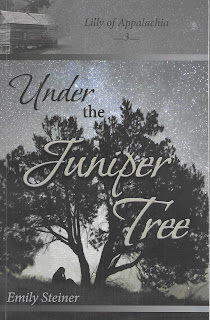 |
| Hawk Moore--Photo by UMWA Local 5895 |
E. Hawk Moore was an Old Regular Baptist preacher, coal miner, and UMWA member and official in UMWA Local 5895 in Wayland Kentucky where he worked for Elkhorn Coal Company for many years and also served as the local's Burial Committeeman for many years. He was also a close friend of my father, Ballard Hicks, who was also employed by Elkhorn Coal Company for a few years before leaving the mine to buy a country store and care for his terminally ill first wife. Hawk, as he was always known, lived about a mile up Steele's Creek from my father's store near the head of the hollow and just above the Steele's Creek Church which he served for years as moderator. Sadly, that church is no longer in existence other than as a rental house. I apologize for the poor quality of the photo above but it was the only one I could find of Hawk. It is a detail of a group photo of the Local 5895 officials which is included in the book "Twentieth Anniversary...of Local Union 5895 United Mine Workers Of America 1933-1953" about which I have also written in this blog. I am also still searching for further biographical information about Hawk above and beyond what is in that book and what I know personally. Hawk's name also appears regularly in the Minutes of several other Associations of Old Regular Baptists as a delegate as does the name of Clabe Mosley whom I wrote about earlier.
I have often seen Hawk's name mentioned in obituaries in the Floyd County Times and I know that the paper's online morgue will contain his obituary which I will quote extensively in a future edit of this blog post. I believe I will also be able to locate another version of that obituary in the Minutes of The New Salem Association of Old Regular Baptists in the near future. Although, my father never joined any church, he often attended Old Regular Baptist services with my mother, Mellie Hicks, and knew most of the Old Regular Baptists in the Floyd and Knott County area. He often traveled to Quicksand Creek in Breathitt County Kentucky to squirrel hunt with Hawk Moore and his son George Moore and a few other men. They always hunted on the same farm on Quicksand which belonged to some man whose name I do not remember who also was known to make moonshine. They would travel to Breathitt County to the farm where they were allowed to camp and hunt for as much as a week at a time. According to my father, part of the deal was that he would always check in with the landowner at his home and inquire as to "where his cow was being pastured". This was a code phrase which they used so the man would tell them which area of his farm was off limits since that was where his moonshine still was located. Apparently, the farm was rather large and even with being limited from hunting in one small fork of the hollow or another, they could all still cover plenty ground, kill their limit of squirrels, and avoid interfering with or leaving a trail to the owner's still. The other part of the deal was that they also bought at least one gallon of moonshine among the lot of them. I suspect that at times they might have bought several gallons. For many years until shortly after I was born my father kept a gallon of moonshine in the house for "medicine" but was never a heavy drinker.
Hawk Moore never drank at all because of his religion but since the other members of the hunting party were able to do so without causing problems he still hunted with them under that setup. One of my father's favorite stories about hunting with Hawk Moore took place on that farm on Quicksand Creek. Daddy said he and Hawk were hunting up the same rather narrow, steep, and rocky little hollow one day and Daddy happened to spook a large whitetail buck which was unusual in that time period in Eastern Kentucky. Hawk was apparently further up the hollow than my father and the deer ran his way. Both men were hunting with the standard 12 gauge shotguns of the day and probably would not have attempted to kill the deer illegally even if they had been properly equipped. Daddy said a few seconds after the deer bolted up the narrow, high sided drainage of the hollow he heard Hawk scream something or other like "Whooee!". Later, he said Hawk said he had been coming down a particularly narrow area of the drainage and the buck nearly ran over him almost literally touching him as the sizeable rack slid past his body. Hawk was known to make the somewhat humorous claim later that he always believed that my father had been trying to get him killed by driving the deer over him. They remained friends for life and, as I recall, Daddy made a trip from our new home on Right Beaver Creek to attend Hawk's funeral when he died. There were also numerous trips through the years between the time we moved from Steele's Creek to Beaver Creek that my parents would hire a driver, since neither of them drove, and travel to Steele's Creek on Sunday to attend the church which was also the church my mother joined.
I will keep searching for further information about Hawk and edit this post as soon and as extensively as I can.




















